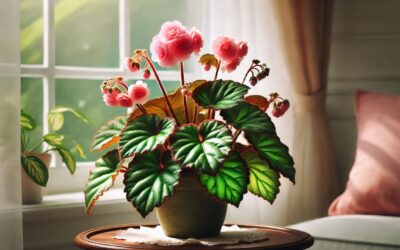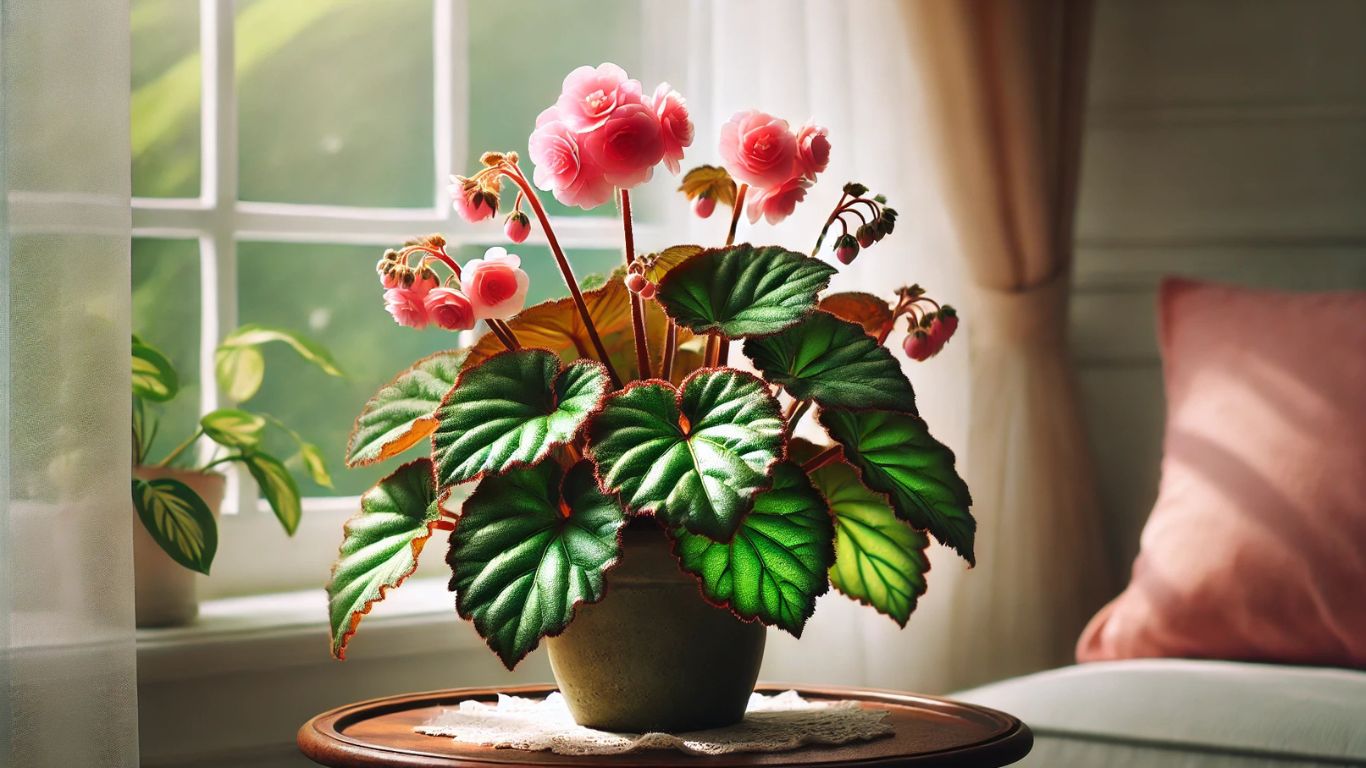Begonia Mallacoota is a captivating plant known for its vibrant foliage and delicate flowers. This unique species has garnered attention among plant enthusiasts and gardeners alike. In this comprehensive guide, we will explore the origins, characteristics, and essential care tips for cultivating and maintaining Begonia Mallacoota in your home or garden.
Origins and Natural Habitat
Begonia Mallacoota belongs to the Begoniaceae family, which encompasses over 1,800 species of flowering plants. This particular variety is native to the Mallacoota region in southeastern Australia. In its natural habitat, Begonia Mallacoota thrives in the understory of rainforests and coastal woodlands, where it enjoys humid conditions, ample rainfall, and filtered sunlight. These environmental factors have shaped the plant’s preferences and growth patterns.
Botanical Characteristics
One of the most striking features of Begonia Mallacoota is its foliage. The leaves are large, often reaching up to 12 inches in length, with a slightly textured surface. They display shades of green, sometimes exhibiting reddish or bronze tints, and often have darker edges that add depth to their appearance. The plant’s bushy and compact growth habit makes it suitable for various indoor and outdoor settings.
In addition to its attractive leaves, Begonia Mallacoota produces small, delicate flowers that typically bloom in clusters. These flowers come in hues of white, pink, or red, providing a beautiful contrast against the lush green foliage. The blooming period usually occurs during the warmer months, adding a splash of color to gardens and indoor spaces.
Ideal Growing Conditions
To successfully cultivate Begonia Mallacoota, it’s essential to replicate the conditions of its natural habitat as closely as possible. This involves paying attention to light, temperature, humidity, and soil requirements.
Light Requirements
Begonia Mallacoota thrives in bright, indirect light. Direct sunlight can cause leaf scorching, so it’s best to place the plant in a location where it receives filtered light. For indoor cultivation, positioning the plant near an east or north-facing window is ideal. If grown outdoors, selecting a spot that offers partial shade will help protect the plant from intense sun exposure.
Temperature and Humidity
This begonia variety prefers moderate temperatures, ideally between 60°F to 75°F (15°C to 24°C). It is not frost-tolerant, so if you live in an area with cold winters, it’s advisable to grow the plant indoors or move it inside during colder months. Begonia Mallacoota also thrives in environments with moderate to high humidity. To increase humidity levels, especially in indoor settings, consider using a humidifier or placing a tray with water near the plant.
Soil and Watering
Well-draining, slightly acidic soil is ideal for Begonia Mallacoota. A peat-based potting mix or a soil blend specifically designed for begonias works well. Ensuring proper drainage is crucial to prevent waterlogged soil, which can lead to root rot. When watering, aim to keep the soil consistently moist but not soggy. Allow the top inch of soil to dry out between waterings to strike the right balance.
Propagation Methods
Expanding your collection of Begonia Mallacoota can be achieved through propagation. The most common methods include stem cuttings and leaf cuttings.
Stem Cuttings
-
Select a Healthy Stem: Choose a non-flowering stem with at least two nodes (the points where leaves attach).
-
Make the Cut: Using a clean, sharp knife or scissors, cut just below a node, ensuring the cutting is approximately 4 inches long.
-
Prepare the Cutting: Remove the lower leaves, leaving two or three at the top.
-
Plant the Cutting: Place the cut end into a pot filled with moist, well-draining soil.
-
Provide Proper Conditions: Keep the soil moist and place the pot in a location with bright, indirect light. Roots typically develop within a few weeks.
Leaf Cuttings
-
Choose a Healthy Leaf: Select a mature, healthy leaf from the plant.
-
Make the Cut: Using a clean tool, cut the leaf with a small portion of the petiole (the stalk that attaches the leaf to the stem).
-
Plant the Leaf: Insert the cut end of the petiole into moist, well-draining soil.
-
Maintain Proper Conditions: Keep the soil moist and provide bright, indirect light. New growth should emerge from the base of the leaf after several weeks.
Common Pests and Diseases
While Begonia Mallacoota is relatively hardy, it can be susceptible to certain pests and diseases. Regular monitoring and prompt intervention are key to maintaining plant health.
Pests
-
Aphids: These small insects feed on plant sap, causing distorted growth. They can be managed by spraying the plant with a mixture of water and mild soap.
-
Mealybugs: Identified by their white, cotton-like appearance, mealybugs can be removed using a cotton swab dipped in rubbing alcohol.
-
Spider Mites: These tiny pests cause stippling on leaves and can be controlled by increasing humidity and using insecticidal soap.
FAQ
1. What is Begonia Mallacoota?
Begonia Mallacoota is a unique variety of begonia known for its vibrant foliage and delicate flowers. It is native to southeastern Australia and thrives in humid environments with filtered light.
2. How do I care for Begonia Mallacoota indoors?
To keep this plant healthy indoors, place it in bright, indirect light, maintain moderate humidity, and keep the soil consistently moist but not soggy. Avoid exposing it to direct sunlight or cold drafts.
3. What type of soil is best for Begonia Mallacoota?
A well-draining, slightly acidic soil mix works best. A peat-based potting mix or a specialized begonia soil blend is ideal.
4. How often should I water Begonia Mallacoota?
Water when the top inch of soil feels dry. Overwatering can cause root rot, so ensure the pot has proper drainage.
5. Can Begonia Mallacoota be grown outdoors?
Yes, it can be grown outdoors in mild climates with partial shade and high humidity. It is not frost-tolerant, so bring it indoors during colder months.
6. How do I propagate Begonia Mallacoota?
The plant can be propagated through stem cuttings or leaf cuttings. Both methods involve placing the cuttings in moist soil and providing indirect light until roots develop.
7. What pests commonly affect Begonia Mallacoota?
Common pests include aphids, mealybugs, and spider mites. Regularly inspect the plant and treat infestations with insecticidal soap or neem oil.
8. What should I do if my Begonia Mallacoota’s leaves turn yellow?
Yellowing leaves may indicate overwatering, poor drainage, or inadequate light. Adjust the watering schedule and ensure the plant is receiving the right amount of indirect light.







